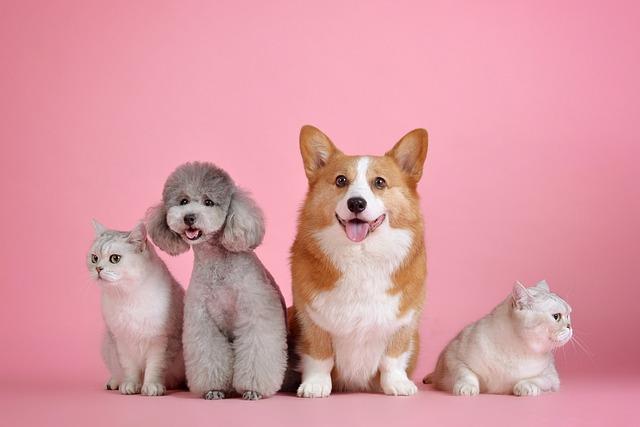Welcoming a new dog into your home is an exciting and joyful experience, but it can also be a time of uncertainty, especially if you already have a beloved pet. Successfully introducing a new canine companion to your existing pet requires patience, understanding, and a gentle approach to ensure a harmonious household. Whether your current pet is a playful pup, a curious cat, or any other furry friend, this guide will walk you through the essential steps to create a positive and loving environment for all. By following these thoughtful tips, you can help foster a bond between your pets that is built on trust and companionship, turning your home into a haven of wagging tails and happy hearts.
Preparing Your Home for a Smooth Introduction
Creating a welcoming and calm environment for your new dog and existing pet is essential for a harmonious introduction. Start by setting up a neutral meeting space where neither pet feels territorial. This could be a shared living room or a backyard, free from their usual toys or favorite resting spots. Ensure that both animals have their own separate areas to retreat to if they feel overwhelmed. Prepare these spaces with comfortable bedding, food, and water to help them feel secure and relaxed.
Stock up on essentials to prevent any last-minute rushes that might add stress to the situation. Here’s a checklist to help you get started:
- Separate feeding bowls to avoid competition.
- New toys for both pets to reduce possessiveness.
- Pheromone diffusers to promote a calm atmosphere.
- Gates or barriers for safe introductions and time-outs.
By preparing thoughtfully, you set the stage for a positive first meeting, encouraging a friendship that will flourish over time.

Understanding Canine Body Language and Signals
Recognizing and interpreting canine body language is crucial when introducing a new dog to an existing pet. Dogs communicate through a myriad of signals, and understanding these can help ensure a smooth introduction. Look out for tail wagging, which can indicate happiness or excitement, but be cautious if the wag is stiff, as it might signal agitation. Ears held back can denote fear or submission, while ears forward often show interest or curiosity. It’s important to note the position of their body; a relaxed posture usually means comfort, whereas a tense stance could suggest unease.
Keep an eye on their facial expressions as well. A soft, open mouth typically suggests calmness, while a closed mouth or wrinkled muzzle might indicate stress. Additionally, observe the eyes; soft blinking can show trust, whereas a hard stare might be a sign of dominance or threat. Watch for play bows, which are often an invitation to interact, and paw lifting, which can suggest uncertainty. By understanding these cues, you can better manage the interaction and help both pets feel secure and understood during their first meeting.
Gradual Introduction Techniques for a Peaceful Transition
Introducing a new dog to your current pet can be a delicate process, and using gradual introduction techniques can ease the transition. Start by exchanging scents. Before any face-to-face meeting, swap bedding or toys between your pets to allow them to become familiar with each other’s scent. This will help reduce anxiety and lay the groundwork for a smoother introduction.
When it’s time for them to meet, choose a neutral space where neither animal feels territorial. Keep the initial meetings brief and positive. Observe their body language closely, and be prepared to intervene if either pet shows signs of stress or aggression. Gradually increase the time they spend together, always under supervision, until they are comfortable in each other’s presence. Throughout this process, ensure both pets receive equal attention and positive reinforcement, like treats or praise, to build a harmonious relationship.

Creating a Harmonious Environment for Both Pets
Fostering a tranquil atmosphere for your furry companions involves a blend of patience, understanding, and strategy. To begin, ensure that each pet has their own personal space. This is crucial, as it allows them to retreat and relax without feeling threatened by the presence of the other. Consider setting up individual feeding areas, resting spots, and play zones, so they can enjoy their own territory without interference.
Additionally, pay attention to their body language. Pets communicate through subtle cues, and understanding these can prevent potential conflicts. Look for signs of stress or discomfort, such as flattened ears or a tucked tail, and intervene calmly if necessary. It’s also helpful to maintain a consistent routine, as predictability can ease anxiety for both pets during the adjustment period. Engage them in joint activities, such as walks or playtime, which can help them bond naturally. Remember, the goal is to create a balanced environment where both pets feel secure and cherished.
- Individual Spaces: Designate separate areas for each pet.
- Observe Body Language: Be mindful of signs of stress.
- Consistency is Key: Stick to a regular routine.
- Encourage Bonding: Facilitate joint activities.

